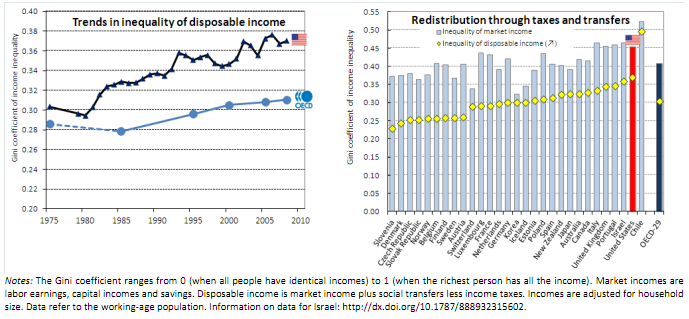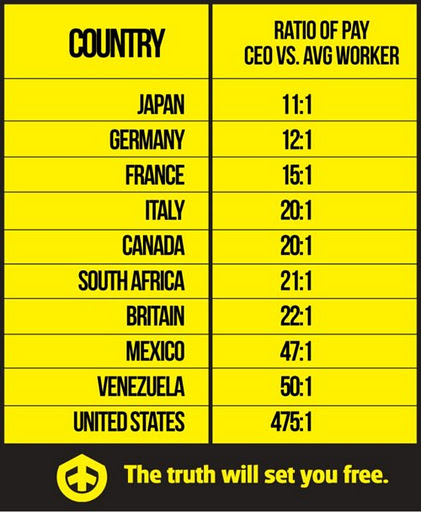I don’t think Newt will have much luck destroying the OECD the way he’d like to destroy the “reactionary socialist institution” of the Congressional Budget Office, though he might try.How many times can economists reproduce the same results given the data on income inequality before our elected officials will actually do something about it? If things keep going the way they’re going, we’re going to have no choice but to eat the rich.
The OECD just released a new report on global inequality and the United States is fourth highest behind Chile, Mexico and Turkey (the entire report is available to read online).
Inequality among working-age people has risen steadily since 1980, in total by 25%. In 2008, the average income of the top 10% of Americans was 114 000 USD, nearly 15 times higher than that of the bottom 10%, who had an average income of 7 800 USD. This is up from 12 to 1 in the mid 1990s, and 10 to 1 in the mid 1980s.
And about that whole “Taxed Enough Already” meme? Yeah, not so much.
Income taxes and cash benefits play a small role in redistributing income in the United States, reducing inequality by less than a fifth – in a typical OECD country, it is a quarter. Only in Korea, Chile and Switzerland is the effect still smaller
But you know what’s best of all? Poor people are working harder than ever just to stay even!
Contrary to the OECD trend, annual hours among lower-wage workers in the US increased by more than 20% over the past decades [Table4.A1.2] – probably linked to incentive policies such as the Earned Income Tax Credit (EITC) but also the relatively low level of the minimum wage. This trend partially offset the rising wage gap and led to a more moderate increase in overall annual earnings inequality.
This may also have something to do with it.
Indeed. The OECD finds that the widening gap is due to both increased distance between the low and the high, but also to a new rigidity of America’s class structure.
The rising incomes of executives and finance professionals account for much of the rising share of top income recipients. Moreover, people who achieve such a high income status tend to stay there: only 25% drop out of the richest 1% in the US, compared to some 40% in Australia and Norway, for instance.
The main reason for widening inequality in the US is the widening wage gap. The gap between the richest and poorest 10% of full-time workers has increased by almost one third, more than in most other OECD countries.
Has it finally come to this, America? Is it time to eat the rich? I do believe so.




Recent Comments